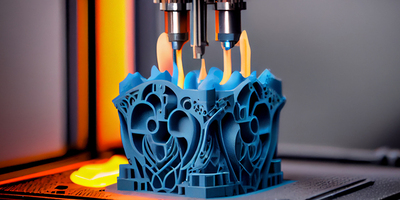AutoCAD, developed by Autodesk, is one of the most widely used computer-aided design (CAD) software tools in civil engineering. It enables engineers, architects, and designers to create precise 2D drawings and 3D models for a wide range of civil infrastructure projects.
In civil engineering, AutoCAD is primarily used for drafting, detailing, and designing construction drawings such as site plans, layouts, road designs, drainage systems, and structural drawings. Its versatility and accuracy make it an industry-standard tool for planning and executing civil infrastructure projects.
AutoCAD enhances productivity, accuracy, and collaboration, allowing engineers to visualize projects before execution, detect design errors, and ensure compliance with standards.
Essential for preparing precise drawings and project documentation.
Improves design efficiency, accuracy, and visualization.
Prepares civil engineers for roles in construction, design consultancy, and infrastructure development.
Forms the foundation for advanced civil design tools like AutoCAD Civil 3D and BIM software.
2D Drafting & 3D Modeling – Create accurate engineering drawings, sections, and 3D designs.
Civil Engineering Applications – Used in roads, bridges, dams, buildings, land surveying, and drainage systems.
Construction Documentation – Generate layouts, plans, and technical reports.
Integration & Collaboration – Supports file formats like DWG and DXF, making it easy to collaborate across teams.
Industry Standard – Used globally in civil engineering firms, construction companies, and government projects.
Create 2D drawings and 3D models for roads, bridges, dams, and buildings.
Develop structural detailing for foundations, beams, and reinforcement.
Draft site layouts, topographic maps, and land development plans.
Use survey data for preparing accurate civil drawings.
Design drainage systems, sewage layouts, irrigation, and pipelines.
Draft hydraulic structures and canal networks.
Prepare architectural floor plans, sections, and elevations.
Design layouts for residential, commercial, and urban projects.
Generate construction-ready drawings, specifications, and reports.
Share and collaborate using DWG/DXF formats with multidisciplinary teams.
By the end of this course, learners will be able to:
Understand and use AutoCAD tools for civil engineering drafting and modeling.
Create 2D construction drawings for buildings, roads, and infrastructure projects.
Develop 3D models to visualize civil engineering designs effectively.
Prepare site layouts, contour maps, and land development plans using survey data.
Design and document drainage, sewage, and utility networks.
Produce accurate plans, sections, elevations, and structural detailing.
Generate construction documents, specifications, and reports as per industry standards.
Apply civil engineering codes and best practices in design documentation.
Collaborate with architects, structural, and MEP engineers using CAD workflows.
Gain industry-ready skills for careers in civil design, construction, and infrastructure development.
100 Hours of Class

Component Based Training
Industry Based Training
International Certifications
100% Placement Assistance
Free Certified Workshops & Seminars
Syllabus Based Classes

Component Based Training
Industry Based Training
International Certifications
100% Placement Assistance
Free Certified Workshops & Seminars
Syllabus Based Classes

Component Based Training
Industry Based Training
International Certifications
100% Placement Assistance
Free Certified Workshops & Seminars
Syllabus Based Classes

Component Based Training
Industry Based Training
International Certifications
100% Placement Assistance
Free Certified Workshops & Seminars
Syllabus Based Classes

Component Based Training
Industry Based Training
International Certifications
100% Placement Assistance
Free Certified Workshops & Seminars
Syllabus Based Classes

Component Based Training
Industry Based Training
International Certifications
100% Placement Assistance
Free Certified Workshops & Seminars
Syllabus Based Classes

Component Based Training
Industry Based Training
International Certifications
100% Placement Assistance
Free Certified Workshops & Seminars
Syllabus Based Classes
No: #172, Raahat Plaza,
2nd Floor, Office No: 196 & 197,
Arcot Road, Vadapalani,
Chennai - 600026.
caddschool@gmail.com
© CADD SCHOOL. All Rights Reserved. CADD SCHOOL